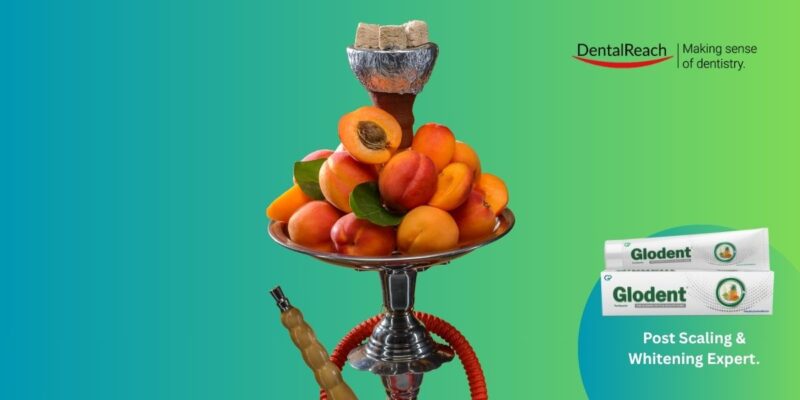Hookah smoking has been a popular social activity for centuries, originating in the Middle East and spreading worldwide. Traditionally, hookah involves smoking flavored tobacco known as shisha, which contains nicotine and other chemicals. However, a new, health-conscious trend is taking over lounges and homes alike — the botanical puff, or herbal hookah. Unlike nicotine-based hookahs, botanical puffs use herbal blends made from natural ingredients such as tea leaves, sugarcane, molasses, or fruit extracts. But is it truly better than traditional nicotine hookah? Let’s explore !!
What Is a Botanical (Herbal) Hookah?
A botanical hookah uses a herbal mixture instead of tobacco. These mixtures typically contain zero nicotine and are made from dried herbs, fruits, or plant extracts. Common bases include tea leaves, rose petals, sugarcane fibers, or mint leaves, infused with natural flavors. The idea is to enjoy the same smooth, aromatic experience of hookah smoking — without the addictive and harmful properties of nicotine.
The Major Differences: Herbal vs. Traditional Hookah
| FEATURE | HERBAL HOOKAH | TRADITIONAL HOOKAH |
| Main Ingredients | Herbs, tea leaves, or sugarcane (no nicotine) | Tobacco leaves with nicotine |
| Addiction Potential | Non-addictive | Highly addictive due to nicotine |
| Chemical Content | Mostly natural plant matter, no toxins | May contain tar, carbon monoxide, heavy metals |
| Flavor Variety | Fruit and mint flavors, expansive range of botanical blends (lavender, chamomile, rose, etc.) | Available in flavours but with a tobacco base |
| Hookah production | Smoke from heated herbs and flavouring, lighter fumes | Smoke from burning tobacco and flavoring, stronger fumes |
| Popularity | Popular among users seeking healthier or nicotine-free options | Preferred by users who want nicotine effects. |
| Restrictions | Usually fewer restrictions (varies with country) | Regulated like tobacco products in most countries |
| Level of experience | Beginner friendly due to a familiar flavour of plant matter | May not be beginner friendly du to the harshness of tobacco |
| Overall Experience | Smooth, relaxing, and aromatic | Stronger throat hit and nicotine buzz |
.
As more people seek wellness-centered lifestyles, this natural, nicotine-free option offers the same social enjoyment and aromatic pleasure without the addictive drawbacks.
But what exactly is herbal hookah, how is it made, and what makes it different? Let’s explore the world of botanical smoke blends and why they’re becoming the preferred choice for conscious smoker
Contents of Herbal Hookah

The mixture of herbal hookah is heated (not burned directly) in the hookah bowl, creating vaporized herbal smoke that’s inhaled through water filtration — just like a regular hookah session. But instead of using tobacco as in traditional hookahs, herbal hookah uses plant-based blends made from natural ingredients such as:
- Tea leaves – for a smooth, earthy burn and subtle aroma.
- Sugarcane fiber – for natural sweetness and slow combustion.
- Dried herbs and flowers – like mint, chamomile, rose petals, or lavender for flavor and fragrance.
- Fruit extracts or molasses – to create vapor and enhance the experience with sweet, natural flavors.
Some popular botanical hookah flavors include:
- Mint Mojito – cooling, fresh, and citrusy.
- Rose & Jasmine – floral and romantic.
- Apple Cinnamon – warm and spicy.
- Lemon Mint – tangy and refreshing.
- Berry Fusion – sweet, fruity, and vibrant.
- Chai or Herbal Tea Blends – earthy and comforting.
You can even blend your own herbal mix at home using dried tea leaves and fruit extracts for a personalized touch.
The Appeal: Why People Are Switching to Herbal Hookah
There are several reasons why herbal hookah is gaining popularity worldwide:
- Nicotine-Free Enjoyment: Herbal hookah contains no tobacco or nicotine, which means it’s non-addictive. You can enjoy the experience without the risk of dependency or withdrawal symptoms.
- Natural Ingredients: Most botanical hookah blends are made from organic herbs and fruits, without synthetic chemicals. This makes them a cleaner option for those who want to avoid artificial additives.
- Low Toxin Content: Since it has fewer toxins compared to traditional shisha, it causes lesser irritation for the throat and lungs.
- Aromatherapy-Like Relaxation: Many herbal blends use plants traditionally associated with calming or therapeutic properties:
- Lavender – helps with relaxation and stress relief.
- Chamomile – promotes calmness and better sleep.
- Peppermint – refreshes the senses and eases breathing.
- Lemon balm or hibiscus – boosts mood and provides a floral aroma.
These herbs make the session feel more like an aromatherapy ritual than a smoking habit.
- Social Connection Without Harm : Hookah has always been about connection — sharing stories, laughter, and flavor. Herbal hookah preserves that essence, allowing people to socialize and relax without exposure to nicotine or harsh tobacco smoke
- The Flavor Experience: One of the most exciting aspects of herbal hookah is the range of flavors available. Because the base is neutral (no tobacco taste), the flavors are often more pure and aromatic.
All these pros of herbal hookahs have given rise to a new, emerging lifestyle trend.
The Botanical Hookah Lifestyle
Herbal hookah is more than just a smoking trend — it’s a cultural and wellness movement.
People today are moving away from habits driven by addiction and seeking experiences driven by intention. The botanical puff fits perfectly into that mindset — a mindful ritual that helps people unwind, meditate, or enjoy social time without harmful chemicals.
Hookah lounges and cafes around the world are now introducing herbal-only menus, offering blends that complement teas, juices, or mocktails. The focus has shifted from “getting a buzz” to “enjoying the moment.”
Botanical hookahs align with the growing wellness and eco-friendly movement. Many brands now use organic, pesticide-free herbs and biodegradable packaging, reducing the environmental footprint of traditional tobacco production. For people who enjoy social smoking but want to avoid addictive substances, botanical hookah offers the perfect balance between lifestyle and wellness
The Downside: The Cons of Herbal Hookah
While herbal hookah removes nicotine and tar from the equation, it’s still important to understand what it offers — and what it doesn’t.
- Herbal hookah still produces smoke, which can contain carbon monoxide and small amounts of tar.
- Prolonged or frequent use of herbal hookahs can still irritate the respiratory system.
- It is definitely not a substitute for fresh air or completely risk-free activity.
In short: herbal hookah is a safer, but not entirely an harmless option. It is best enjoyed in moderation as part of a mindful lifestyle.
Use with Caution: Smoke Is Still Smoke!
Final Thoughts: Nature’s Way to Unwind
The herbal hookah represents a new era of conscious indulgence. It allows people to keep the traditional charm of hookah culture while embracing wellness, nature, and mindfulness.
If you love the taste, the aroma, and the social experience of hookah — but want to avoid nicotine — the botanical puff is the perfect middle ground. It’s flavorful, aromatic, and refreshing — a healthier way to relax and reconnect.
The Verdict: A Better Choice for Mindful Smokers
While no form of smoking is entirely risk-free, botanical puff hookahs are undeniably a cleaner, safer, and more natural alternative to nicotine-based hookahs. They deliver the same social and sensory experience — the aroma, the flavor, the camaraderie — without the chemical baggage of tobacco.
If you’re seeking relaxation, flavor, and a mindful experience rather than a nicotine buzz, the botanical puff is the smarter choice.
Disclaimer: While herbal hookah is a healthier alternative, it’s important to remember that burning any substance creates carbon monoxide and other byproducts. So, while you avoid nicotine, you’re not inhaling pure air — moderation remains key.





















Comments